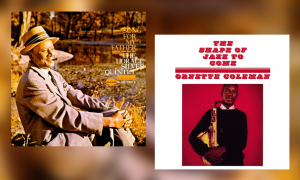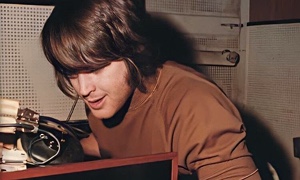Home » Jazz Articles » Building a Jazz Library » Ten Tiptop Albums Which Include Thelonious Monk & Denzil...
Ten Tiptop Albums Which Include Thelonious Monk & Denzil Best’s Totally Rocking “Bemsha Swing”

Courtesy Ginger Baker by Rick Watford
Monk’s place in the jazz scene has been grossly distorted as a result of high-powered publicity work. He has written a few attractive tunes, but his lack of technique prevents him from accomplishing much as a pianist.
—Leonard Feather
Monk co-wrote "Bemsha Swing" with the drummer Denzil Best, who was born in New York City with Barbadian heritage. Bemsha is a re-rendering of Bimshire, which is the colloquial name for Barbados. Unlike "'Round About Midnight," which Monk allegedly co-wrote with trumpeter Cootie Williams, whose involvement in its creation was in fact limited to being the first person to record it, "Bemsha Swing" was a genuine collaboration. It has a bluesy feel but does not follow the traditional twelve-bar blues structure, having instead two sixteen-bar sections, played a fourth apart.
Monk first recorded the tune in 1952 and that recording is included on the album Thelonious Monk Trio (Prestige, 1954). Best seemingly never recorded it during his short career. The piece stayed in Monk's repertoire throughout his life. It remains one of his best known tunes and has been covered by many other artists.
Scratching the tip of the iceberg can begin here as well as anywhere....
 Miles Davis All Stars
Miles Davis All StarsMiles Davis All Stars Vol. 2
Prestige, 1955
After its 1952 debut, Monk did not rerecord "Bemsha Swing" again under his own name for four years. But in 1954, as part of a quintet led by trumpeter Miles Davis, he cut the version on this album (which was later reissued as Miles Davis And The Modern Jazz Giants). Taken at a slower and more deliberate pace than the original, at 9:30 minutes the recording is also three times longer, allowing solos from Davis, Monk and vibraphonist Milt Jackson. The craggy tune is not best suited to Davis' mid-1950s style, and he sounds a little uneasy, but Monk and Jackson romp through their solos propelled by bassist Percy Heath and drummer Kenny Clarke. While the session was still in progress, word leaked out of Rudy Van Gelder's Hackensack studio that Davis and Monk were at odds, with Davis telling Monk to lay out during his, Davis,' solos and punching Monk on the shoulder for emphasis. When jazz critic Ira Gitler encountered Monk at Minton's later that night, he asked him if the rumour was true. "Miles'd got killed if he hit me," said Monk.
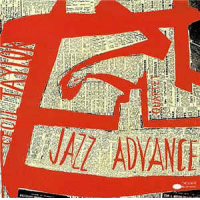 Cecil Taylor
Cecil Taylor Jazz Advance
Transition, 1956
Although few AAJers would mistake pianist Cecil Taylor for Monk, the parallels between the two players run deep, particularly at this stage of Taylor's career. Both were uncompromising outsiders, both shared a love of dissonance, both were intensely percussive, and both recorded sui generis originals together with turned-inside-out standards. On this, his debut album, Taylor's set list includes Cole Porter's evergreen "You'd Be So Nice To Come Home To" and Monk's soon-to-be standard "Bemsha Swing." And despite accusations that he did not swing, Taylor does just that on this outer-limits version, supported by bassist Buell Neidlinger and drummer Dennis Charles. In a further Taylor / Monk parallel, soprano saxophonist and Monk devotee Steve Lacy is heard on two tracks, though not on "Bemsha Swing." In fact, Lacy did not get around to recording the tune until he did so with pianist and arranger Gil Evans for a 1984 tribute album (see below).
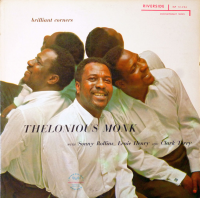 Thelonious Monk
Thelonious MonkBrilliant Corners
Riverside, 1957
Like all the tracks on this landmark album, "Bemsha Swing," the closer, is given a stone classic reading. Monk leads a quintet with Clark Terry on trumpet, Sonny Rollins on tenor saxophone, Paul Chambers on bass, and Max Roach, who has added tympany to his drum kit. The performance rocks from beginning to end, and in the theme statements, Monk—who most often recorded in trio and quartet formats—makes the most of the extended harmonic canvas offered by two horns. There are also outstanding solos from everyone but Chambers, who remains in back-up role. Monk starts his solo by dissecting the theme, then embarks on a dual improvisation with Roach. Rollins follows, soaring over Roach's turbulent accompaniment. Terry does his typically playful thing, then Roach duets with, first, Monk, then, after a solo passage, with Rollins. The rest of the album—"Brilliant Corners," "Ba-Lue Bolivar BaLues-Are," "Pannonica" and "I Surrender, Dear"—is just as good.
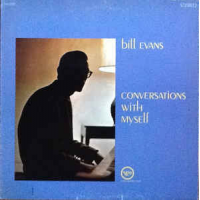 Bill Evans
Bill EvansConversations With Myself
Verve, 1963
The seraphically beautiful and exquisitely nuanced Bill Evans is not an obvious choice of pianist to cover Monk compositions, and indeed he rarely did so. But Evans includes three on Conversations With Myself: "'Round About Midnight," "Blue Monk" and "Bemsha Swing," although "Bemsha Swing" was omitted from the original LP, only making the cut during the CD era. And that is not all that is unusual—the entire album features Evans on overdubbed three-way piano, with no accompanists, something well out of the ordinary for jazz albums of the time. (The executive producer was Creed Taylor, who must have been itching to add a rhythm section if not a string orchestra). Anyway, Evans' initiative was vindicated and Conversations With Myself won a Grammy Award and spawned two follow-up albums in the same vein. Evans' reading of "Bemsha Swing" is, truth be told, a little stiff and one cannot help thinking it might have worked better in the company of drummer Philly Joe Jones, who never failed to make Evans swing hard. A fascinating experiment nonetheless.
 J. J. Johnson
J. J. JohnsonJ.J.!
RCA Victor, 1965
J.J.! was the pioneering bop and hard bop trombonist J.J. Johnson's first album fronting a big band and is also one of very few big band recordings of "Bemsha Swing." It is a corker. Johnson's playful arrangement engages with the tune's inherent dissonances, framing short solos from Johnson himself, Jerome Richardson on flute, Hank Jones on piano, and, on flugelhorn, Clark Terry, who had been featured on Monk's aforementioned Brilliant Corners. A further Monk connection is provided by alto saxophonist Oliver Nelson, who is in the reed section. Four years later, Nelson would arrange the big band on Monk's Blues, Monk's final album for Columbia before the label dropped him.
 John Coltrane & Don Cherry
John Coltrane & Don CherryThe Avant-Garde
Atlantic, recorded 1960, released 1966
The Avant-Garde is a good rather than great John Coltrane album, which may be the reason it stayed on the shelf for six years while Atlantic gave precedence to half a dozen other more or less contemporaneous recordings including Giant Steps and My Favourite Things. The partnering of Coltrane, who is heard on soprano and tenor, with three members of altoist and fellow radical Ornette Coleman's band—cornetist Don Cherry, bassist Charlie Haden and drummer Ed Blackwell—on four Coleman and Cherry originals was not a marriage made in heaven. It would almost certainly have been a publicity wheeze dreamed up by Atlantic's Ahmet and/or Nesuhi Ertegun rather than by Coltrane and Cherry. Coltrane sounds most at home on "Bemsha Swing," on which Blackwell is replaced by Percy Heath, but nowhere near as assured as did on his 1957 recordings with Monk at the Five Spot and Carnegie Hall. A curiosity, but worth having for all that.
 Various Artists
Various ArtistsThat's The Way I Feel Now: A Tribute To Thelonious Monk
A&M, 1984
Recorded in New York in 1984 by producer / curator Hal Willner with a cast of thousands, well, dozens, That's The Way I Feel Now is a double-album tribute to Monk, who had passed two years earlier. The participants range from Todd Rundgren and Donald Fagen through to Carla Bley and John Zorn (Willner had previously put together similarly eclectic casts of fans for Charles Mingus and Kurt Weill tribute albums). Steve Lacy, on soprano, and Gil Evans, on electric piano, contribute an elegiac and utterly loving "Bemsha Swing," which closes the album. Starting in 1959, Monkophile Lacy covered most of Monk's tunes during his career, many of them several times, but he only arrived at "Bemsha Swing" with this album and he never recorded it again. Why, we do not know. The track is, however, a perfect coda to Willner's project. P.S. In 1959, Lacy was part of the big band put together by Evans for Great Jazz Standards (World Pacific), on which Lacy was a featured soloist on "Straight No Chaser."
 Houston Person & Ron Carter
Houston Person & Ron CarterNow's The Time
Muse, 1990
If Steve Lacy and Gil Evans shifted the paradigm, albeit gently, with their version of "Bemsha Swing," another duo recording, by soul-jazz rooted tenor saxophonist Houston Person and renaissance-man acoustic bassist Ron Carter, swung the pendulum back delightfully. Unadorned and straight-ahead, their's is a balladic celebration of a great tune with tuneful solos from both players thrown in as a bonus. Other tracks include Tommy Wolf and Fran Landesman's "Spring Can Really Hang You Up The Most," Eubie Blake's "Memories Of You" and Antonio Carlos Jobim's "Quiet Nights." Lovely, unpretentious stuff.
 Ginger Baker Trio
Ginger Baker TrioFalling Off The Roof
Atlantic, 1996
A trio comprising guitarist Bill Frisell, double bassist Charlie Haden and drummer and hell raiser Ginger Baker, most famous as one-third of heavy metal progenitors Cream, might not sound like a perfect marriage. And indeed it is not. But it works surprisingly well on Falling Off The Roof (recorded in a studio near Frisell's Oregon home and named after an accident Baker had a few months earlier while fixing the roof of his home in Italy). Baker's roots were in jazz. He acquired his chops in the late 1950s sitting in with bands in clubs in London's West End, where he was mentored by the British drum legend Phil Seamen, from whom Baker also acquired a life-long love of West African music and a near life-long heroin habit. On "Bemsha Swing," Frisell solos, never straying far from his whammy bar, and so does Haden. Baker stays in the background, relatively speaking. The album's other cover is Charlie Parker's "Au Privave" and the nine remaining tunes were composed, individually, by Frisell, Haden and Baker.
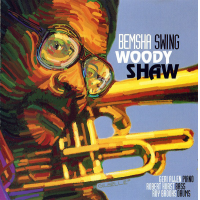 Woody Shaw
Woody ShawBemsha Swing Live
Blue Note, recorded 1986, released 1997
The quartet on this posthumously released double album by trumpeter Woody Shaw looks like a dream team. And it does not disappoint. Shaw, who passed three years later but is still at the peak of his powers, is teamed with pianist Geri Allen, bassist Robert Hurst and drummer Roy Brooks. Allen's percussive and harmonically venturesome approach to the set list, which kicks off with "Bemsha Swing" and also includes Monk's "Well You Needn't" and "Nutty," is as engaging as Shaw's high-octane, often microtonal explorations. Brooks' "Theloniously Speaking" closes the album, which was recorded at Baker's Keyboard Lounge in Detroit, where the fabulously talented drummer was born and where he spent much of the 1980s fighting mental health issues. Great performances from all involved and audio quality to match. The cover art was created by the saxophonist and painter Gil Mellé, who had designed covers for Monk (and Miles Davis and Sonny Rollins) in the 1950s.
Tags
PREVIOUS / NEXT
Support All About Jazz
 All About Jazz has been a pillar of jazz since 1995, championing it as an art form and, more importantly, supporting the musicians who make it. Our enduring commitment has made "AAJ" one of the most culturally important websites of its kind, read by hundreds of thousands of fans, musicians and industry figures every month.
All About Jazz has been a pillar of jazz since 1995, championing it as an art form and, more importantly, supporting the musicians who make it. Our enduring commitment has made "AAJ" one of the most culturally important websites of its kind, read by hundreds of thousands of fans, musicians and industry figures every month.










